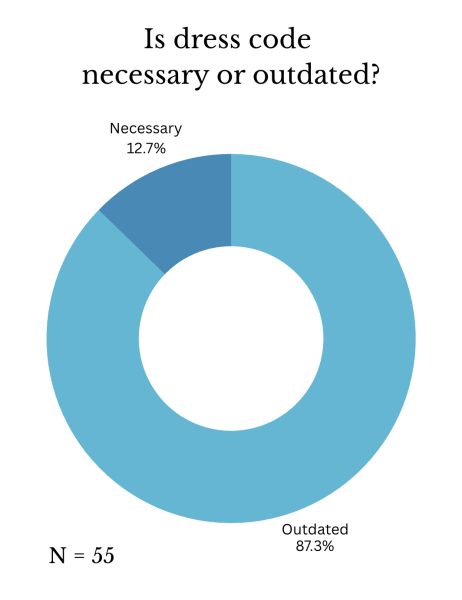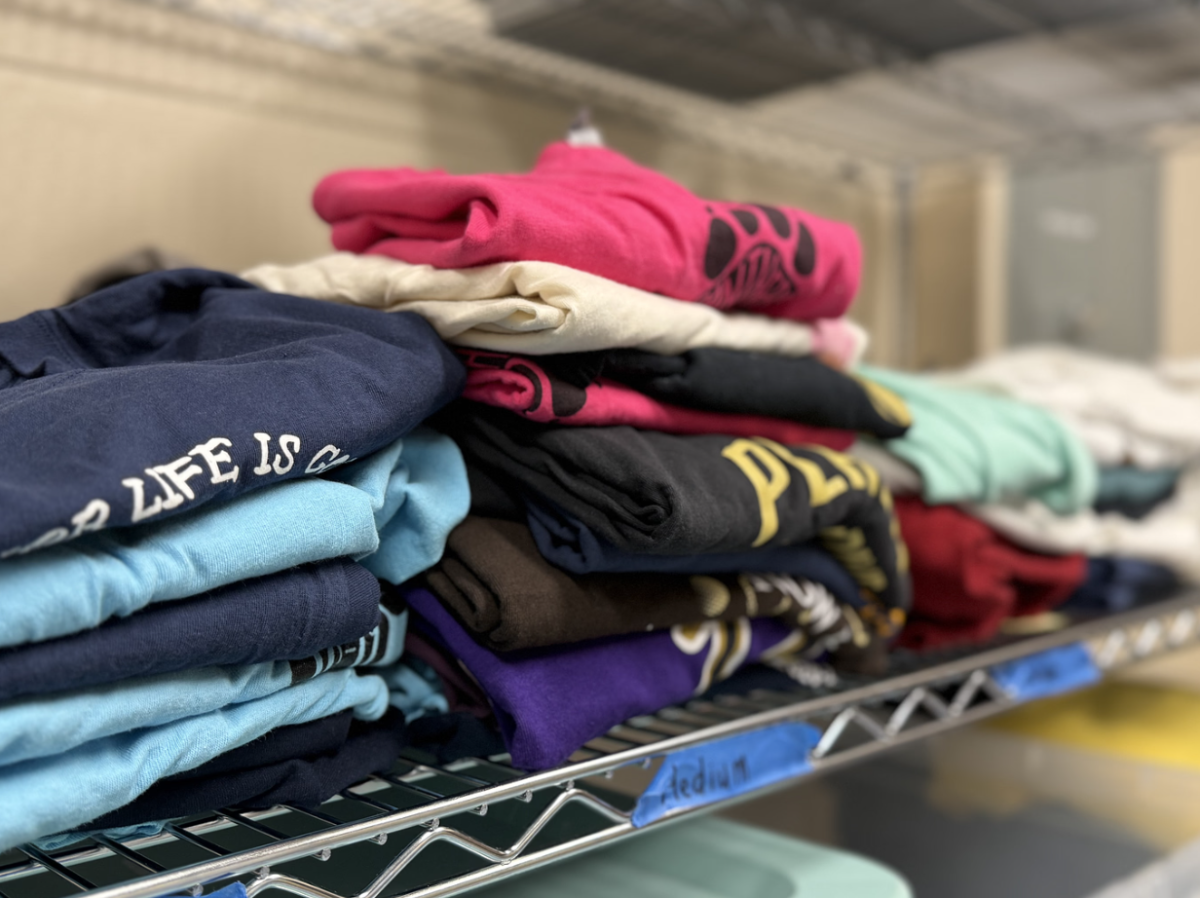Fashion has drastically changed over the years, but has the dress code for public schools? High school dress codes have been a long-standing topic of debate, striking a balance between structure and expression. As schools adapt to changing social norms, controversy is created over whether dress codes are still a necessary part of school systems or if they have become a tradition in need of change.
While some teachers and students may find clothing outside the dress code to be inappropriate and distracting, others disagree. The impact clothing can have allows individuals to express their personal feelings and styles, showcasing their personalities through fashion.
“I use my clothing to express myself; it shows my interests, like when I wear my Formula One shirts, it’s one of my favorite things,” said Annabelle Estremera (10). “Every day, I get to choose if I want to stand out or blend in. When a dress code tells me what I can and cannot wear, I feel like it forces me to hide who I am.”
Additionally, the rules appear to impact female students over male students disproportionately. Dr. Tim Jordan’s article on school dress codes states that, according to findings, over 83% of students cited for dress code violations were girls. Study findings also demonstrated how the methods of school dress code enforcement promote a sexually objectifying environment in which girls feel mentally and physically unsafe.
“I think the rules apply more to girls than guys,” said Charlie Weaver (10). “I barely see guys get dress-coded; it feels like most of the rules are about short shorts or straps, which have more to do with girls.” While dress codes are presented as gender-neutral, their enforcement often targets female students. The focus on specific clothing items, such as shorts and straps, points to a set of rules that many students perceive as unequal.
Supporters believe dress codes help reduce distractions. The argument is that by limiting the wearing of revealing or inappropriate clothing, schools can ensure that students focus on academics. It can also reduce the pressure to wear expensive, name-branded clothing, which can help minimize social divisions.
“A personal experience I had was in my English class, where my teacher made almost all the girls in my class stand up and prove their shorts were long enough,” Ella Siegel (10) said. “It took more than 20 minutes out of class, and she ended up sending seven girls to the office, which we all ended up getting sent back because we were either not or barely out of dress code. I think that was more distracting than shorts of someone who I can’t even see.”
Rules can often lead to students being pulled out of class, shamed and having learning time taken away. Enforcement of dress codes can be inconsistent and subjective; terms like “distracting” or “inappropriate” can be interpreted negatively.
In response to these issues, some schools are exploring new approaches. There are alternatives, such as school uniforms, which are more common in private schools. Other schools are shifting toward less severe punishments, such as allowing students to get cover-ups instead of sending them home.
The debate over dress code highlights a conflict between order and individuality. While supporters believe these rules are crucial for maintaining a focused and distraction-free environment, opponents argue they are outdated and unfairly targeted. Ultimately, an effective path forward for schools is to find a balance between academic goals and students’ right to express themselves. 

